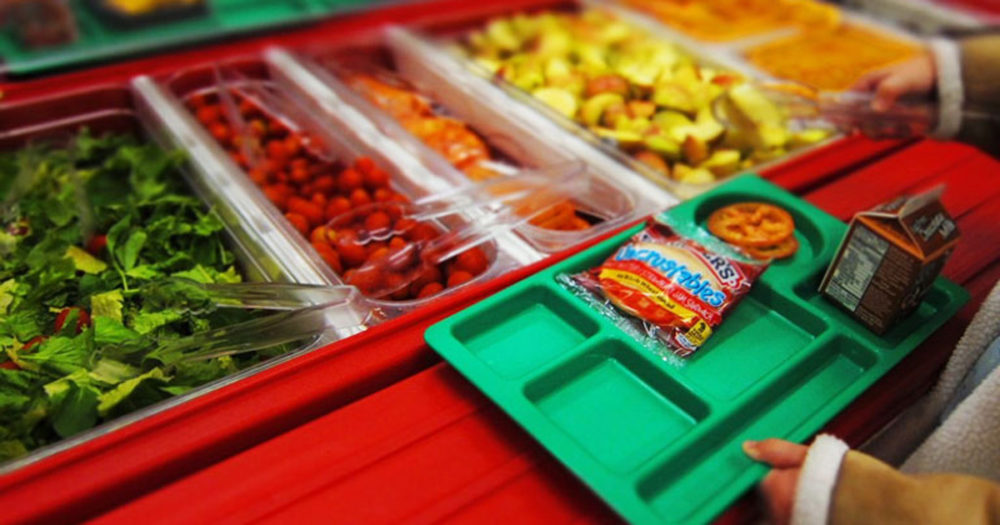It’s so good to share good news.
This month, the New York City Public Schools announced that, starting with the current school year, all students can receive free lunch with no questions asked. That means less stigma for kids facing food insecurity, less worrying for families, and less paperwork for school districts. And it might surprise you to learn that at the heart of this victory—carried across the finish line by a group of dedicated advocates—is a fairly common application of technology.
The underlying policy at play here is called the “Community Eligibility Provision,” or CEP. It was authorized with the Healthy, Hunger-Free Kids Act of 2010 to help schools and local educational agencies with a high percentage of low-income students. As a colleague wrote on this blog in 2016, CEP helps school systems (like New York City Public Schools) to reduce paperwork and poverty stigma, while making sure that free and reduced price meals are available to all kids who might need them. Instead of asking each family to fill out an application, CEP allows schools to determine student eligibility through household participation in programs like SNAP (the Supplemental Nutrition Assistance Program, commonly referred to as food stamps) and TANF (the Temporary Assistance for needy Families program). If over 40 percent of students are deemed eligible, schools receive additional federal reimbursement dollars to cover free meals for more students beyond those who qualify—ensuring that even those whose families are not enrolled in federal assistance programs can still get meals if they need them.
So how is New York City able to cover free meals for all students?
Here’s the math answer: the CEP multiplier is 1.6, which means that if 50 percent of students at School X are eligible for free meals, School X can actually serve free meals to (50 percent) * (1.6) = 80 percent of students using federal reimbursement dollars. If New York City Public Schools are now receiving federal reimbursement for 100 percent of students, it would mean they have demonstrated that at least (100 percent) / (1.6) = 62.5 percent of students are eligible through CEP.
Which brings us to the real-world answer: New York is able to cover free meals for all students because it got smart about its use of technology to better reflect true student need. The New York Department of Education website describes the new data matching engine it has developed to identify eligible students:
“This new matching system provides a more efficient and accurate process for matching students across a range of forms that families already complete. This new matching process yielded an increase in the number of students directly certified – or matched to another government program – and increased the direct certification rate, allowing the City to qualify for the highest level of reimbursement in the federal CEP program. The number of families living in poverty has not increased; the changes to the matching process allow the City to better identify families.”
Why the technology matters
I know what you’re thinking. It’s awesome that all kids in New York City Public Schools can eat for free! But why make such a big deal about this technology? It doesn’t seem like rocket science.
Bingo.
New York City Public Schools is not using a particle accelerator to improve data matching among students. They haven’t even used a 3-D printer. The data integration and management systems they’re employing, while complex, are actually fairly commonplace. It’s the same sort of technology banks use to combine different databases of credit scores and application information to make credit offers, which is the same technology Netflix uses to deduce that because you watched Good Burger, you might like Cool Runnings. (Hypothetically speaking.)
Yet when it comes to the use of technology in the administration of nutrition assistance programs, we have fallen remarkably behind. The transition from actual paper food stamps to electronic benefit cards officially concluded in 2004, nearly fifty years after the introduction of the first major credit card. Even now, some states (looking at you, Wyoming!) require SNAP applications to be faxed, mailed, or returned in person.
To be clear, I’m not claiming technology is a silver bullet. For one, implementing new technology often comes with a price tag—and a steep learning curve. (Just ask Kentucky.) In particular, the use of data matching raises ethical concerns related to privacy and security, and these are not to be overlooked. But in many cases, these are arguments to improve, rather than disregard, the technology and the policies that guide its use. Because when our public assistance programs fall behind, so do the people who rely on them, and so does our ability to deliver maximum public benefit with increasingly limited resources. It is critical (and just plain sensible) to use the tools at our disposal to help realize the potential of current technological systems to enhance the strength and efficiency of the federal safety net.
Carrying the momentum in the 2018 farm bill
Keep an eye on this issue. There is reason to suspect that the advancement of technology in public assistance programs will be addressed in the 2018 farm bill, and even reason to hope for a bipartisan effort. In fact, I’ll take the opportunity to quote Glenn Thompson, chairman of the House Agriculture Nutrition Subcommittee, who opened a June hearing on SNAP technology and modernization with this sentiment: “We need to get the policy right. As we approach the upcoming farm bill, it is critical we understand opportunities to amend and improve the program to properly account for the changes that come with our evolving, technological world.”

